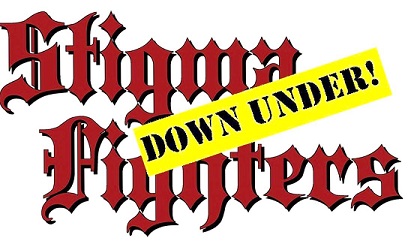“Suicide is a major social and public health issue. While such deaths can occur for many reasons, and many complex factors might influence a person’s decision to suicide, these preventable deaths point to individuals who may be less connected to support networks. For instance, they may be less inclined to seek help or may be less intimately connected to people who might otherwise be aware of problems or step in to assist”
Brief Snapshot of suicide in Australia3
- Suicide is a prominent public health concern. Over the past five years, the average number of suicide deaths per year is 2,415.
- In 2012, 1,901 males (16.8 per 100,000) and 634 females (5.6 per 100,000) died by suicide, a total of 2,535 deaths (11.2 per 100,000), which equates to an average of 6.9 deaths by suicide in Australia each day.
- For those of Aboriginal and Torres Strait Islander descent, the relative age standardised suicide rate is 2.5 times higher for males and 3.4 times higher for females than for the corresponding non-Indigenous population. For further facts and statistics relating to the Indigenous population, visit the priority population facts and stats page.
- In 2012, approximately 75% of people who died by suicide were males and 25% were females.
- Suicide accounted for 1.7% of death from all causes in 2012. In males 2.5% of all deaths were attributed to suicide, while the rate or females was 0.9%.
- In 2012 in the 15 – 19yr old age group 129 young people committed suicide. In the 20 – 24yr old age group 195 young people committed suicide.
- Suicide is much more common among males than females in every state and territory of Australia. This is consistent with trends observed in other Western countries.
- The ratio of male to female suicides rose from 2:1 in the 1960s to over 4:1 in the 1990s. Throughout the early 2000s, the ratio of male to female suicides has been somewhat below 4:1, and stood at 3.0:1 in 2012.
- In 2012, 56.9% of male suicide deaths were by hanging, followed by 10.3% due to poisoning by drugs and then 9% due to poisoning by other agents.
- In 2012, hanging was the most common method of suicide used by females, constituting 47% of all female suicide deaths. The second most common cause of suicide death was poisoning by drugs (27.1% of suicide deaths).
- In 2012, suicide represented 2.5% of all male deaths and 0.9% of all female deaths.
- Suicide rates for men born outside Australia are slightly lower than for Australian-born men, whereas corresponding rates for women are very similar.
Now for Self-Harm rates.
- Females are more likely to self harm than males. 62% of those hospitalised in 2008-09 were female.
- In 2008-2009 there were 26,935 cases of hospitalised care due to self-harm. NOT all people who are hospitalised for self harm intended to die by suicide.
- In 2012, 70 males aged 15-19 years and 144 males aged 20-24 years died by suicide. In the same year, 59 females aged 15-19 years, and 51 females aged 20 to 24 years died by suicide.
- Considering all causes of death, suicide accounted for 21.9% of deaths among 15-19 year old males and 28.7% of deaths among 20-24 year old males in 2012. The corresponding percentages for females in both of these age groups are 32.6% and 25.2% respectively.
- During the mid-1980s, suicide rates for 15-19 year old males rose rapidly and peaked at 21.0 per 100,000 in 1988. Over the following decade, rates fluctuated around 17-19 per 100,000 for this group and stood at 18.4 per 100,000 in 1997.
There are notes pertaining to the use of statistics, many factors may affect statistics due reporting and non-reporting of incidences. This article provides valuable insight into the current rise in self-harm rates. http://www.abc.net.au/news/2013-08-23/alarming-spike-in-self-harm-in-australian-women/4902384
Now tell me that it’s all too hard, that we shouldn’t be talking about this! If it was your son or daughter or loved one, would you want to know you had easy access to the most understanding people who knew exactly how you were feeling? People within the sanctuary of your local community, not people in offices miles from where you and your young person live.
If you thought your young person was in crisis and you knew they wouldn’t talk to you, wouldn’t you want to know they could access the help they desperately needed immediately within the safety of their high school or local immediate community / suburb, with people who understood and could offer them the caring and comfort they needed?
It’s exactly why “Empowered Parenting Now” has been set up, by a mum, for others, in the hope that one day the change that is so desperately needed becomes reality and our current rates of self harm and suicide reduces to little or in a perfect world, nothing at all. Until CHANGE happens or while it’s in the process of occurring, even when it does happen, keep these numbers safe and handy… If you’re feeling overwhelmed or in trouble please seek help, please call one of the below numbers
- Lifeline Australia 13 11 14
- Kids Help Line 1800 55 1800
There is light at the end of the tunnel.

